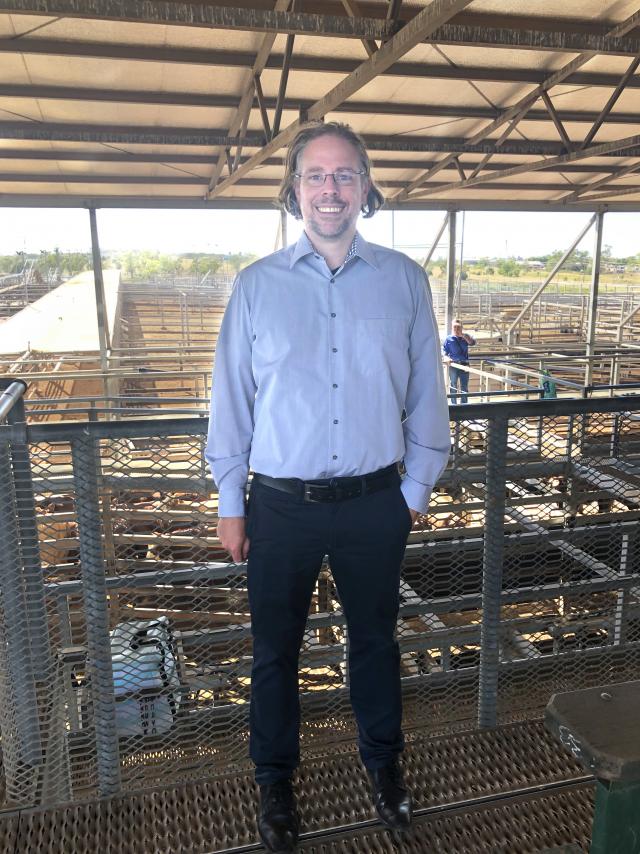2023 is shaping up as another strong year for Australia’s agricultural sector, although a repeat of last year’s “exceptional” performance is unlikely, Rabobank says in a newly released industry outlook.
In its flagship Australia Agribusiness Outlook 2023, titled ‘Continuing on a successful path’, the agribusiness banking specialist says a stand-out 2022 – with high, often record, commodity prices and good to partly-record production volumes – has put the nation’s farm sector in a healthy position for the year ahead, allowing for “record high farm incomes across the country, well above the already very good 2021 results”.
But it cautions against expectations of a repeat of last year’s stellar conditions in the agricultural sector, which were overall “exceptional”, despite the impacts of severe flooding in some regions.
“Beef, dairy, grain, oilseeds and canola prices all hit excellent and often record levels in Australia at a time when our farmers produced good to excellent volumes,” the report said.
“This was a fantastic combination which allowed Australian farmers to cash in because these factors far outpaced the significantly-elevated cost of fertilisers, energy, interest rates and farmland.
“2023 will bring many opportunities, (but) those with overly-inflated expectations of a repeat of 2022 might be disappointed as the world heads into recession.”
Agricultural commodity prices – last year driven to record levels as a result of the war in Ukraine, supply chain issues related to Covid and labour shortages as well as global market tightness and volatile input prices – are forecast to track at less elevated levels through 2023, albeit “well above the five-year average”, according to Rabobank.
Report lead author, RaboResearch general manager Australia and New Zealand Stefan Vogel said prices for grains and oilseeds and beef had moved notably below highs seen last year, and 2023 was likely to “deliver good, but not record, prices in an environment of elevated costs and global recession”.
The Rabobank Rural Commodity Price Index – which tracks local prices of key commodities in Australian-dollar terms – is forecast to continue to ease from record highs reached in Q2 2022 over the course of this year, albeit to still track above the five-year average with a chance of rising again in late 2023.
Production and returns
The 2023 production outlook for Australian agriculture is once again positive, the report says, although it is not yet clear if it will reach the heady highs of 2022.
“Favourable weather conditions in 2022 – with much of the east coast having received plentiful rainfall, even too much in some cases – have provided good soil moisture levels and also filled supplies for irrigation,” Mr Vogel said.
“And while the rainfall outlook for 2023 isn’t as high, this should also mean fewer weather disruptions for the sector.
“This sets the scene for another positive year of farm production in 2023, however, a repeat of 2022’s abundant grain and fodder production is not – at least yet – expected.”
As such, Australian farm returns are expected to be good in the year ahead, but some way “off from last year’s record”, the report says.
Farm inputs
Cost pressures will continue to weigh on the farm sector, with costs forecast to remain above historic averages, albeit with global fertiliser prices now down 40 to 50 per cent from their peak.
“Although locally fertiliser prices have not fully replicated this extent of decline,” Mr Vogel noted.
“A return to the highs seen in fertiliser prices last year is unlikely,” he said, “but besides supply and demand, gas and grain prices need to be watched carefully to determine the ultimate direction of fertiliser prices.”
Freight rates for both dry containers and bulk have fallen “massively” back to normal levels as recession fears weigh on the trade outlook, Mr Vogel said. “However, our meat and fruit exports in Australia rely on refrigerated containers and their rates still remain very high, although there are signs they too are easing,” he said.
Freight reliability, though, is still below normal.
“Ag businesses need to continue to plan early and remain flexible in 2023 as we will still see delays in delivery of machinery and other farm inputs,” Mr Vogel said.
Labour shortages will persist, he said, “but, as with supply chain disruptions, the industry has learned to live with and work through them.”
Interest rate rises are likely to have some further way to go in the first half of 2023, Rabobank forecasts, with “serious cuts” not to be expected until 2024.
“The Australian dollar is expected to remain around current levels with a slight strengthening later in the year, which will still support our exports,”
Mr Vogel said, “but makes our imports a little less expensive compared with the second half of 2022.”
Global factors
A number of global factors are also working in favour of an optimistic outlook for Australia’s ag sector, Mr Vogel said.
These include the slow pace of recovery in global
commodity supplies, with shortages in grain and still-slow supply recovery in world beef and dairy production.
“We don’t see right now that 2023 will suddenly be filled with a lot of product in these commodity sectors, but rather a gradual recovery.
That’s good news for Australian farmers, although it doesn’t bring us back to the all-time price highs we had last year driven by the Ukraine war,” he said.
China’s surprise U-turn on its zero-Covid policy should also open up its economy and potentially increase consumer demand in this important market, Mr Vogel said, although the short-term economic and trade impacts remain uncertain.
Geopolitical risks also remain, he said, including with China, and Australia will need to continue to work on diversification of export markets.
Global recessionary pressures also hang over the local Australian agricultural sector, the Rabobank outlook says.
“Australia is likely to avoid a recession, but inflation remains a concern locally and globally.
Heightened interest rates are tightening the belts of consumers,” it says.
And this will impact both consumer demand and trade.
“The impact on consumption is being felt differently in different product categories as consumers trade down on quality and price.
Dairy and animal protein will have to navigate this, while the price decline in grains will offset any volume reduction risk,” Mr Vogel said.
Commodities
For specific commodity sectors, Rabobank’s 2023 Agribusiness Outlook finds:
Wheat & barley – a continuation of historically-low global stocks. Locally, the 2023 pricing trajectory will be divided between the west and east coast, with WA to see greater supply.
Canola – the world enters 2023 with considerably more canola than last year, globally and locally.
Beef – Australian production is on the rise, as an increased cattle inventory becomes more productive.
Consumer markets will be softer amid slower economic conditions.
Sheepmeat – 2023 to see Australian lamb production push further into record territory.
Wool – price outlook positive for 2023, driven by an increase in fine-micron values.
Dairy – dairy farm margins remain positive heading towards the 2023/24 season.
Cotton – prices are expected to stabilise in 2023.
Australian production forecast below record 2022 levels.
Sugar – global surplus, due to expected recovery in Brazilian cane production, to weigh on the sweetness of prices.
Consumer foods – Australian consumer behaviour will continue to adapt to cost-of-living pressures and falling real wages, and this will remain a key theme through 2023.
Farm inputs – overall supply and demand adjusting to a ‘new’ new normal, with prices easing from record levels.






